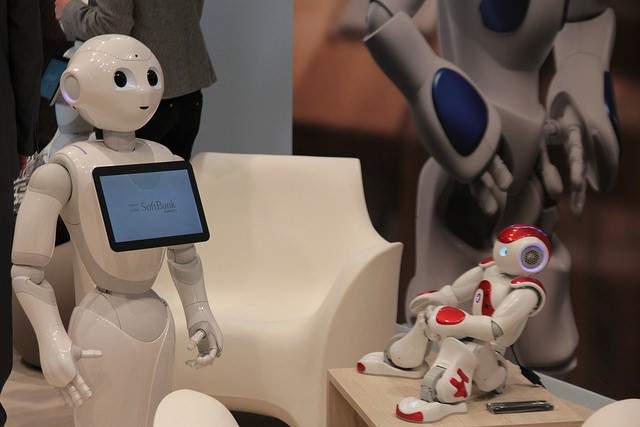
Innovative Strategies for Ames Department Stores Retail
Robotic shopping assistants

Credit: Pierre Metivier
Robotic shopping assistants like chatbots are already a standard feature of many online retailers, but as the border between online and offline is blurring, shoppers can expect to see robots that interact with customers to answer questions in brick-and-mortar stores in the nearer future. Suburban complexes in Sydney and Melbourne owned by property developer Stockland, as well as Pizza Hut in Singapore and SoftBank Mobile stores in Japan already use robotic shopping assistants.
Holograms for shopping

Credit: Brother UK
Whether it’s a holographic representation of goods on shelves, or customisable interactive holograms that shoppers could tweak to see what options of product they can get, holograms could be common in future of the department stores and could also be expected to replace material mannequins. Ralph Lauren currently uses holograms for the window display of new garments.
Artificial intelligence for a personalised in-store experience

Credit: Brother UK
Department stores of the future could use AI to create a personalised shopping experience for customers. AI could, for example, greet customers, or allow them to just walk out of the store without the need to checkout to create a frictionless shopping experience. Currently, Amazon Go offers customers a checkout-free experience, while Tesco is trialling the technology in its Express convenience store built on site its Welwyn Garden City headquarters.
Augmented reality (AR) shopping

Credit: Brother UK
Department store of the future could use AR to offer customers a number of options before they even touch a product. The stores could have for example digitally enhanced changing rooms, which are already trialled by retailers such as Rebecca Minkoff. The digitally enhanced changing rooms at Rebecca Minkoff is a ‘connected wall’ which features a mirrored display that shows videos and inspirational content, and enables interaction as shoppers can touch the surface to request prepared fitting rooms, order drinks and even change the lighting. The ‘connected walls’ recognise all items in the room through RFID and identifies other sizes and colours available to the consumer all connected through a mobile app.
Interactive rails/screens

Credit: Farfetch
Instead of hundreds of clothes cluttering shelves in stores, department stores of the future could feature interactive rails and screens, allowing customers to browse through the store’s collection more easily. This technology is currently being implemented by luxury retailer Farfetch and Tommy Hilfiger.
Virtual reality (VR) shopping

Credit: JWTIntelligence
Brands are continuously looking to use VR both for direct sales opportunities and to enrich customer experience of the brand. VR allows retailers to create a custom and unique experience lure shoppers in-store and away from online retailers. Retailers capture the curiosity of potential customers by offering tech demos and virtual reality simulations, for example outdoor apparel company Merrell launched a 4D, motion-tracked, multi-sensory experience that simulates extreme landscapes like wobbly bridges and landslides using an Oculus Rift headset to tap into a market of thrill seekers. American department store Macy’s is already using VR to sell furniture.
Magic mirrors/smart mirrors

Credit: Tommy Hilfiger
Smart mirrors in fitting rooms present customers with different outfit choices and allow them to check the availability of each item in real time. This retail innovation is currently used by Tommy Hilfiger in its Regent Street store in London. Customers trying on items can use the mirrors to request a different size or item from the catalogue to be brought directly to the changing room by a store associate. Other retailers already featuring this technology include fast fashion retailer Zara and Farfetch.
3D body scanning

Credit: Bodymetrics
While body scanning technology isn’t exactly new retail innovation, as retailers including New Look, Levi’s and department store Sephora already using it. The number of body scanning start-ups is growing rapidly and soon body scanning could be a norm in every store and department store making the difficulty of finding the right size or fit a thing of the past.



